List of assassinated American politicians
This list is missing information about more politicians, which can be found in Category:Assassinated American politicians. (June 2023) |
Assassinations carried out against American politicians occurred as early as the 19th century, the earliest of which is believed to have been carried out against David Ramsay in 1815. Since then, several American politicians have been assassinated while being elected or appointed to office, or were candidates for public office. Out of these, four were president of the United States, the earliest of which being Abraham Lincoln in 1865 and the most recent being John F. Kennedy in 1963.[1] There are 61 assassinated American politicians listed. The most common method of homicide was with one or more gunshots.
Federal offices
[edit]Presidents of the United States
[edit]| Politician | Portrait | Party | Year | Location | Assassin | Motive | Ref |
|---|---|---|---|---|---|---|---|
| Abraham Lincoln | 
|
Republican |
|
Ford's Theatre, Washington, D.C. | John Wilkes Booth | Lincoln's defeat of the Confederate States of America | [2] |
|
Lincoln was attending a play at Ford's Theatre five days after the surrender of Confederate General Robert E. Lee in the American Civil War. Booth, a well-known actor and a Confederate sympathizer, was allowed into the president's box where he waited at the back until the audience laughed, hoping it would mask the sound of his gun. He shot Lincoln in the back of the head with a pistol. He then drew a knife and slashed at Major Henry Rathbone. Booth leapt from the box onto the stage where he broke his leg, shouted "sic semper tyrannis", and then fled to his horse. An unsuccessful attack on Secretary of State William H. Seward took place simultaneously. Lincoln was taken to a boarding house across the street where he died nine hours later. Booth was found by soldiers on April 27. Wielding a gun and refusing to surrender, Booth was shot and killed by Sergeant Boston Corbett. Eight co-conspirators were tried for Lincoln's assassination and found guilty by a military commission. | |||||||
| James A. Garfield | 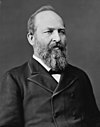
|
Republican |
|
Washington, D.C. | Charles J. Guiteau | Assailant was refused a patronage appointment | [3] |
|
Garfield arrived at a railroad station on a visit to his ill wife Lucretia Garfield. Guiteau approached Garfield from behind and shot him three times with a pistol. Several doctors arrived to treat the wound, but their actions worsened and contaminated it. Garfield was brought to the White House to receive further treatment, remaining in critical condition and developing sepsis over the following weeks as doctors kept exacerbating the wound. He was brought to Elberon, New Jersey, in September to escape Washington's warm climate. He died from his wound days later. Guiteau was hanged on June 30, 1882. | |||||||
| William McKinley | 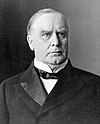
|
Republican |
|
Pan-American Exposition in Buffalo, New York | Leon Czolgosz | Anarchism | [4] |
|
McKinley was shaking hands with visitors at the Pan-American Exposition when he was approached by Czolgosz. Czolgosz's hand was bandaged, under which he concealed a revolver. He shot McKinley twice before he was apprehended by guards and members of the crowd. McKinley was brought into surgery at the exposition's medical facility and partially recovered while staying at the home of John G. Milburn. His condition then declined and he developed gangrene. McKinley died eight days after he was shot. Czolgosz confessed to the killing and said that it was his "duty". He was executed by electric chair on October 29, 1901. | |||||||
| John F. Kennedy | 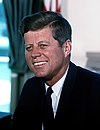
|
Democratic | November 22, 1963 | Dallas, Texas | Lee Harvey Oswald | Unknown | [5] |
|
Kennedy was riding in a motorcade in Dallas, Texas, when Oswald set up a sniper's nest on the sixth floor of a warehouse. Kennedy was in an open convertable, and Oswald fired at Kennedy three times with a rifle. The third shot struck Kennedy's skull, releasing brain matter from his head. He was taken to a hospital with minimal signs of life and died half an hour later. Oswald fled from the scene and killed Officer J. D. Tippit with a revolver when he was approached as a potential suspect. Police apprehended Oswald two hours after the assassination. As Oswald was being escorted through the police department two days later, businessman Jack Ruby approached Oswald and shot him on live television. Oswald died two hours later. Kennedy's assassination was one of the most defining events of the 20th century in the United States, and numerous conspiracy theories and conflicting eyewitness accounts have presented alternate explanations of how and why Kennedy was killed. | |||||||
Members of the United States Congress
[edit]| Politician | Portrait | Party | Date | Office | Location | Assassin | Motive | Ref |
|---|---|---|---|---|---|---|---|---|
| James M. Hinds | 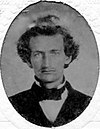
|
Republican | October 22, 1868 | U.S. Representative from from Arkansas's 2nd district | Monroe County, Arkansas | George W. Clark | Hinds' support for Reconstruction policies | [6] |
| Hinds was shot alongside Reverend James Brooks while they were campaigning for Ulysses S. Grant in the heavily-Democratic Monroe County. Clark caught up to the men on horseback shortly after giving them directions, shooting both men with a shotgun before fleeing. Brooks rode to town for help with minor injuries while Hinds laid mortally wounded. Hinds was taken to a doctor but died shortly after. Clark was never caught. | ||||||||
| Thomas C. Hindman | 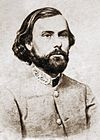
|
Democratic |
|
Former U.S. Representative from Arkansas's 1st district | Helena, Arkansas | Unknown assailants | Disputed motive | [7] |
| Hindman was in his sitting room with his family when a man shot him with a musket through the open window. The Republican Party was accused of assassinating him, but its members suggested non-political motives for the killing. | ||||||||
| Thomas Haughey | 
|
Republican |
|
Former U.S. representative from Alabama's 6th district | Courtland, Alabama | Collins (first name unknown) | Assassin supported Haughey's opponent | [8] |
| Haughey was campaigning for reelection at a courthouse. He got in an argument and then a fistfight with Collins, a supporter of his opponent, who then shot Haughey with a revolver. Haughey died five days later. Collins was broken out of jail and never found. | ||||||||
| Edward Dexter Holbrook | 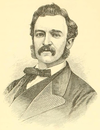
|
Democratic |
|
Former Congressional delegate from the Idaho Territory's at-large district | Idaho City, Idaho | Charles Douglass | Argument | [9] |
| After Holbrook called Douglass—a fellow Democrat—"a liar, a coward, and an assassin", Douglass confronted Holbrook in front of the latter's law office. They spoke before drawing revolvers and shot at one another. Holbrook died from his injuries the next day. Douglass was acquitted for manslaughter. | ||||||||
| John M. Clayton | 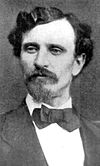
|
Republican | January 29, 1889 | U.S. Representative-elect from from Arkansas's 2nd district | Plumerville, Arkansas | Unknown assailant | Unknown motive | [10] |
| Clayton was staying at a boarding house in Plumerville investigating election fraud that caused him to lose his House race. Buckshot was fired through the window of his room, killing him. The assassin was never found. Clayton was later determined to be the winner of the election. | ||||||||
| José Francisco Chaves | 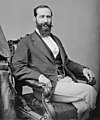
|
Republican | November 26, 1904 | Former Congressional delegate from the New Mexico Territory's at-large district | Pinos Wells, New Mexico | Unknown assailant | Unknown motive | [11] |
| Chaves was dining at a friend's home when a man shot at him through a window. | ||||||||
| John M. Pinckney | 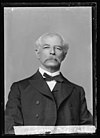
|
Democratic | April 24, 1905 | U.S. representative from Texas's 8th district | Hempstead, Texas | J. N. Brown | Pinckney's support for Prohibitionism | [12] |
| Pinckney was speaking during a Prohibition League event when a protestor, J. N. Brown, fired his pistol at the prohibitionists. A 30-second gunfight broke out between the groups. Pinckney died trying to stop the fight and his brother died trying to pull him back. Brown and Prohibition League leader John Mills were also killed. Brown's son was also shooting, and he was charged as an accomplice but acquitted. | ||||||||
| Huey Long | 
|
Democratic |
|
|
Louisiana State Capitol, Baton Rouge, Louisiana | Carl Weiss | Disputed motive | [13] |
|
Long was an influential but polarizing figure in American politics, and previous assassination attempts caused him to hire bodyguards. While at the Louisiana State Capitol to give his thoughts on state legislation, Weiss approached him and shot him with a revolver. Bodyguards tackled Weiss and then returned fire, killing him. Long went under surgery and died of internal bleeding early the next morning. Many details of the killing are unknown, so various theories and alternate sequences of events have been proposed, including some that say Weiss was not the killer. | ||||||||
| Robert F. Kennedy | 
|
Democratic |
|
|
Ambassador Hotel, Los Angeles, California | Sirhan Sirhan | Opposition to Kennedy's support for Israel | [14] |
|
Kennedy was staying at the Ambassador Hotel while campaigning for president. While cutting through the kitchen to reach his room after a speech, Sirhan Sirhan fired eight shots from a pistol, hitting Kennedy in the head. Kennedy was taken to Good Samaritan Hospital where he died 26 hours later. Congress passed a law granting Secret Service protection to major presidential contenders. Sirhan was sentenced to death, but this was commuted to life in prison after California abolished capital punishment. | ||||||||
| Leo Ryan | 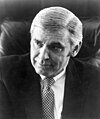
|
Democratic | November 18, 1978 | U.S. representative from California's 11th district | An airport tarmac in Port Kaituma, Guyana | Members of the People's Temple | Ryan's investigation of Jonestown | [15] |
| Ryan went to Guyana to investigate allegations of abuse in the Jonestown settlement of the Peoples Temple movement, and he examined the facility. He learned that several members wanted to leave and brought them to the airport as he left. Members of the Peoples Temple ambushed his delegation before he boarded, killing Ryan and four others. Peoples Temple leader Jim Jones had all of his followers commit mass suicide the same day. The ambush's leader Larry Layton was acquitted in Guyana but extradited and found guilty in the U.S. | ||||||||
| Allard K. Lowenstein | 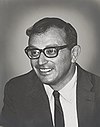
|
Democratic | March 14, 1980 | U.S. representative from New York's 5th district (former) | New York City, New York | Dennis Sweeney | Schizophrenia-induced belief that Lowenstein was the leader of an international Jewish conspiracy | [16] |
| Sweeney was a student and political ally of Lowenstein. Believing that Lowenstein led a conspiracy targeting him, Sweeney entered Lowenstein's office and shot him with a pistol. Sweeney then waited in the office for the police to arrest him. He was found not guilty by reason of insanity. | ||||||||
Federal judges
[edit]| Politician | Portrait | Party | Date | Office | Location | Assassin | Motive | Ref |
|---|---|---|---|---|---|---|---|---|
| John H. Wood, Jr. | May 29, 1979 | Judge of the U.S. District Court, Western District of Texas | San Antonio, Texas | Charles Harrelson | Contract killing ordered by Jamiel Chagra as he was set to be tried by Wood | [17] | ||
| As a judge, Wood had a reputation for giving severe sentences in drug-related cases. Drug trafficker Jamiel Chagra was set to be tried by Wood, so he hired contract killer Charles Harrelson to kill the judge. On his way to the court, Wood was shot by Harrelson in the back with a rifle, killing him instantly. The Federal Bureau of Investigation launched a sprawling investigation, and it identified Harrelson as a suspect a few years later. Harrelson and other co-conspirators were indicted in 1982 and found guilty. | ||||||||
| Richard J. Daronco | May 21, 1988 | Judge of the U.S. District Court, Southern District of New York | Pelham, New York | Charles Koster | Assailant was the father of a plaintiff whose harassment suit was dismissed by Daronco | [17] | ||
| Daronco presided over a discrimination and sexual harassment case in 1988, in which Carolee Koster was suing Chase Bank and her boss Allan Ross after she was fired. Carolee and her father Charles dedicated years of their lives and most of their savings to the case. Charles had to be removed from the courtroom during the case because of his emotional investment in the case, and Daronco ruled against Carolee on May 19. Two days later, Daronco was gardening in his yard when Charles arrived and shot him. Daronco made it into his home before dying from his wounds. Charles followed him in and then shot himself. Carolee later said she regretted not settling out of court. | ||||||||
| Robert Smith Vance | Democratic | December 16, 1989 | Judge of the U.S. Court of Appeals for the Eleventh Circuit | Mountain Brook, Alabama | Walter Moody | Killed after the court refused to expunge a previous conviction for explosives possession from the assailant's record | [17] | |
| Vance was targeted by Moody because he was a member of the Eleventh Circuit Court of Appeals. Moody had been convicted of possessing an explosive in 1972 and blamed the court for his failure to get the conviction overturned. Moody mailed a pipe bomb to Vance on December 14. Vance received it two days later and opened the package at his kitchen table. It exploded, killing him instantly and seriously injuring his wife. Moody was indicted after the FBI determined the bomb was identical to Moody's previous explosive, and he was sentenced to life in prison for the killing. | ||||||||
Diplomats
[edit]| Politician | Portrait | Party | Date | Office | Location | Assassin | Motive | Ref |
|---|---|---|---|---|---|---|---|---|
| John Patterson | March 22, 1974 (disappearance) | United States Vice Consul | Hermosillo, Mexico | Bobby Joe Keesee | Ransom | [18] | ||
| Patterson was posted in Hermosillo by the U.S. Foreign Service. He was accompanied by Keesee, who had befriended him, on route to a meeting. Keesee then kidnapped Patterson for ransom. At some point, a struggle occurred as Keesee beat Patterson to death. The consul general received a note saying that Patterson had been taken hostage by the non-existent People's Liberation Army of Mexico and that they demanded $500,000 ransom. Patterson's mother took out a loan and his wife attempted to deliver it twice, but the kidnapper never arrived. The FBI suspected that it was a self-kidnapping by the Pattersons to keep the ransom money for themselves, but Keesee became a suspect after they discovered his name in the hotel registry. Keesee was arrested on May 28. He said he wrote the letter to give Patterson's wife hope but was otherwise uninvolved. Patterson's body was discovered on July 8. Keesee was sentenced to 20 years in prison and paroled in 1986, but he committed another murder in 1998 and was sentenced to life in prison. | ||||||||
| J. Christopher Stevens | 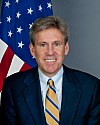
|
Democratic | September 11, 2012 | Ambassador to Libya | Benghazi, Libya | Disputed | Unknown motive | [19] |
| Approximately 80 militants attacked an American diplomatic compound in Benghazi, Libya, on September 11, 2012. The building was struck with explosives and lit on fire, and Stevens was found dead after the attack ended. Three other Americans at the facility were also killed. | ||||||||
State offices
[edit]Governors
[edit]| Politician | Portrait | Party | Date | Office | Location | Assassin | Motive | Ref |
|---|---|---|---|---|---|---|---|---|
| Charles Bent | 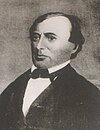
|
Independent | January 19, 1847 | Governor of the New Mexico Territory | Taos, New Mexico | Tomás Romero; Pablo Montoya | Part of the Taos Revolt; opposition to American presence in New Mexico | [20] |
| Bent was appointed governor of the New Mexico Territory, which was part of Mexico until it was occupied by the United States. Several Hispanic and Native American residents of Taos and the nearby settlement Taos Pueblo attacked Bent in his home. He refused to act in his own defense, believing the assailants to be his friends. They shot him with arrows in the face and stomach, slashed his hands and wrists, shot him with firearms after he tried to escape outside, and scalped him. This was followed by a series of attacks over the following weeks, the Taos Revolt. Some of the assailants were hanged for the killings. Bent was succeeded by Donaciano Vigil. | ||||||||
| Edwin Stanton McCook | 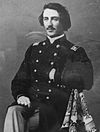
|
Republican | September 11, 1873 | Acting governor of the Dakota Territory | Yankton, Dakota Territory | Peter Wintermute | Argument | [21] |
| McCook was the Secretary of the Dakota Territory and served as acting governor. In March 1873, he got into an argument with banker Peter Wintermute about the reappointment of Governor John A. Burbank. The men then encountered each other in September during a meeting about the Dakota Southern Railroad where they argued again. Wintermute insulted McCook and suggested shooting him, so McCook beat Wintermute. Wintermute left and returned to the meeting three times. McCook was present the third time, and Wintermute shot him in the chest with a pistol. He beat Wintermute again while bleeding out. McCook was then taken to his hotel where he died the next morning. Eyewitness accounts varied significantly, causing enough doubt that Wintermute was acquitted. | ||||||||
| William Goebel | 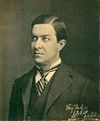
|
Democratic |
|
Governor of Kentucky | Frankfort, Kentucky | Unknown assailant | Unknown motive | [22] |
| Goebel lost the 1899 Kentucky gubernatorial election but challenged it as fraudulent. He arrived at the Old State Capitol on January 30, 1900, to hear a committee's findings on election fraud. As Goebel approached the building, he was shot in the chest with a rifle. Goebel was brought back to his hotel. The committee determined that the election had been fraudulent and declared him the winner, which Democratic legislators voted to affirm on January 31. He was sworn in as governor on his deathbed the same night. Goebel died on February 3, and party leaders negotiated an agreement on February 6 in which Goebel was recognized as the winner and his running mate Lieutenant Governor J. C. W. Beckham succeeded him. The assassin was never identified. | ||||||||
| Frank Steunenberg | 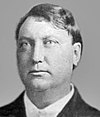
|
Democratic | December 30, 1905 | Former Governor of Idaho | Caldwell, Idaho | Albert Horsley | Opposition to Steunenberg's labor policy | [23] |
| Steunenberg was killed by a bomb planted on his front gate by miner Albert Horsley on December 30, 1905. Steunenberg had been elected governor of Idaho in 1896 but became unpopular with the mining union and chose not to run for reelection in 1900. The bomb exploded when Steunenberg opened the gate, and he died shortly after. Horsley was arrested, having already been involved with a previous bombing. He confessed and implicated three leaders of the Western Federation of Miners. They were arrested but not convicted of any charges. | ||||||||
State legislators
[edit]| Politician | Portrait | Party | Year | Office | Location | Assassin | Suspected motive | Ref |
|---|---|---|---|---|---|---|---|---|
| David Ramsay | 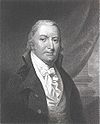
|
|
Former president of the South Carolina Senate | Charleston, South Carolina | William Linnen | Assailant retaliated after Ramsay deemed him insane | [24] | |
| Ramsay had been asked to evaluate Linnen's mental state and determined him insane, sending him to prison. Linnen was eventually released and made threats against Ramsay, who did not take them seriously. On May 6, 1815, Linnen walked past Ramsay holding a handkerchief. He then turned around, drew a pistol from beneath it, and shot Ramsay three times in the back. Ramsay was brought to his home where he insisted that Linnen was not in control of his actions and should not be considered guilty. He died two days later. | ||||||||
| Charles C. P. Arndt | 
|
Whig | February 11, 1842 | Member of the Council of the Wisconsin Territory | Madison, Wisconsin | James Russell Vineyard | Argument | [25] |
| Arndt was in the Wisconsin Territory council chamber when he engaged in a fight with Vineyard, a fellow councilman. The two were friends despite being political opponents, but they fell into a heated argument over the nomination of a Grant County sheriff. Vineyard called Arndt a liar and it appeared they were going to fight, so the presiding officer ordered that they separate. Vineyard confronted Arndt again when the meeting adjourned, and Arndt struck Vineyard. Vineyard responded by drawing a pistol and shooting Arndt in the chest. Arndt died within minutes. Vineyard was arrested and resigned from his seat, but the council rejected his resignation so it could expel him. He was acquitted of manslaughter, prompting outrage from his opponents and accusations of corruption. | ||||||||
| James Strang | 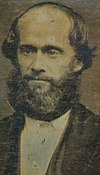
|
Democratic |
|
Member of the Michigan House of Representatives | Beaver Island, Michigan | Hezekiah McCulloch, Thomas Bedford, and Alexander Wentworth | Opposition to Strang's religious leadership | [26] |
| Strang was the leader of his own sect of Mormonism, proclaiming himself its king. Three men who opposed Strang, each for their own reasons, formed a plot to kill him. They were led by McCulloch, a former friend of Strang's. They allied with Captain Charles H. McBlair of the USS Michigan, who docked at Beaver Island and summoned Strang to board the ship. When Strang prepared to board, Bedford and Wentworth emerged from behind stacks of cordwood and shot Strang twice in the back of the head. After he fell to the ground, they shot him once in the back and struck him in the face with their guns. They fled to Mackinac County aboard the USS Michigan with McCulloch and their respective families. Here their actions were celebrated. They were taken to jail, but the doors were left unlocked so they could leave and no further investigation occurred. Strang died from his wounds weeks later, and the Mormon community of Beaver Island was forcibly displaced. | ||||||||
| John W. Stephens | Republican | May 21, 1870 | Member of the North Carolina Senate | Yanceyville, North Carolina | Caswell County chapter of the Ku Klux Klan | Attacks on Republicans | [27] | |
| Stephens sat in on a Conservative meeting where he was received with hostility over his support for Reconstruction. He was allowed to sit, but he was accused of being a spy for the Republicans. Former county sheriff Frank Wiley spoke to Stephens, and the two went into the courthouse's basement where he was ambushed and killed by the Ku Klux Klan. A search party was formed that evening when he did not return home, and his body was found by his brother the following morning. In response to Stephens' killing and other Ku Klux Klan activities, Governor William Woods Holden declared martial law to combat the group, triggering the Kirk–Holden war. John Lea, the leader of Caswell County's Ku Klux Klan chapter at the time, confessed to orchestrating Stephens' assassination in 1919. | ||||||||
| Elisha G. Johnson | 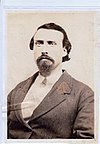
|
Republican | 1875 | Member of the Florida Senate | Lake City, Florida | Unknown | Unknown | [28][29] |
| Johnson was a member of the Florida Senate at a time when it was evenly split between Democrats and Republicans. While closing his store at night, he was shot and killed with a shotgun. This gave Democrats a majority in the legislature, but they denied involvement. It was one of many attacks against Republicans in Florida during this period. | ||||||||
| Charles Caldwell | 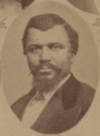
|
Republican | December 30, 1875 | Member of the Mississippi State Senate | Clinton, Mississippi | Several assailants | Racism | [30] |
| Caldwell was killed by white vigilantes as one of many attacks on black Mississippians. Some time after his house was vandalized and his neighbors were killed, a friend lured him into an ambush where he was shot by a mob. | ||||||||
| Louis Cardis | Republican | October 10, 1877 | Member of the Texas House of Representatives | El Paso, Texas | Charles Howard | Argument during the San Elizario Salt War | [31][32] | |
| Cardis was one of several politicians in El Paso who tried to seize control of the Guadalupe Peak salt deposits from local Mexican–Americans. He became enemies with his former friend Howard, a district judge, and they had physical altercations on two separate occasions. Howard tried to claim the deposits for himself, and a mob captured him when he arrested two Mexican–American men for trying to access the deposits. He was released on the condition of leaving, but he returned to El Paso to kill Cardis, shooting him twice with a shotgun. Howard fled, but he returned in December to reassert his claim over the deposits and was shot by a Mexican firing squad. | ||||||||
| W. H. H. Tison | 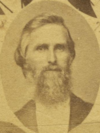
|
Democratic | December 4, 1882 | Speaker of the Mississippi House of Representatives | Baldwyn, Mississippi | J. Edward Sanders | Retaliation for an attack | [33] |
| Tison was walking in front of Sanders' store when Sanders stood at the door and shot Tison with a shotgun. Tison died instantly. Tison and his brothers had beaten Sanders the previous week following a feud between Sanders and the Tison family. Sanders was arrested shortly after the assassination. | ||||||||
| Samuel Newitt Wood | 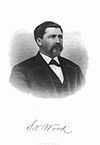
|
Republican | June 23, 1891 | Member of the Kansas Senate | Hugoton, Kansas | James Brennan | Unknown | [34] |
| Wood's friend-turned-enemy Judge Theodosius Botkin appointed Wood's enemy William O'Connor as county attorney, allowing him to persecute Wood. Wood went to Hugoton for a court appearance on one of O'Connor's charges against him despite fears that his political opponents there may harm him. Wood went into the courtroom to check the docket, and as he came out Brennan shot him with a pistol from behind. Wood ran, but Brennan pursued before shooting him again in the back and then in the head. He died fifteen or twenty minutes later. Sheriff Cann was at the court and tried to arrest Brennan, but after a standoff Cann said he would submit to Sheriff Weir of Morton County. Botkin and O'Connor were accused by the Democratic Party and other opposition parties of orchestrating the assassination. Brennan was released when an impartial jury could not be formed, and he fled the state in fear of retaliation from Wood's allies. A new attempt to prosecute him failed when a court in Oklahoma refused to extradite him to Kansas. | ||||||||
| Leon Jordan | Democratic | July 15, 1970 | Member of the Missouri House of Representatives | Kansas City, Missouri | Unknown | Unknown | [35] | |
| Jordan was shot three times with a shotgun by multiple assailants while he was leaving his tavern. The Mafia is alleged to have been involved. | ||||||||
| Tommy Burks | Democratic | October 19, 1998 | Member of the Tennessee Senate | Monterey, Tennessee | Byron Looper | Election | [36] | |
| Burks was assassinated by his opponent, Byron Looper, in his reelection campaign for the Tennessee Senate. Burks was driving his truck when he was shot. Looper was convicted for the killing. Burks' widow Charlotte Burks took his place as a candidate and was elected to succeed him in the Tennessee Senate. | ||||||||
| Clementa C. Pinckney | Democratic | June 17, 2015 | Member of the South Carolina Senate | Emanuel African Methodist Episcopal Church, Charleston, South Carolina | Dylann Roof | White supremacy | [37] | |
|
Pinckney was part of a bible study group at the Emanuel African Methodist Episcopal Church where he was reverend when Roof entered and asked to join. He participated for nearly an hour before he drew a gun and began shooting people in the church. Pinckney and eight others were killed. Roof was captured in North Carolina the following morning. | ||||||||
State judges
[edit]| Politician | Portrait | Party | Date | Office | Location | Assassin | Motive | Ref |
|---|---|---|---|---|---|---|---|---|
| John P. Slough | 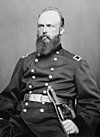
|
Democratic |
|
|
Santa Fe, New Mexico | William Logan Rynerson | Argument | [38][39] |
| Slough was responsible for swearing in members of the New Mexico legislature until the power was removed from him, and he struck the official he felt was responsible. He walked out of the resulting hearing, so Representative Rynerson introduced a joint resolution to remove Slough as chief justice. Slough referred to Rynerson as "a liar, a coward and a thief", so Rynerson confronted him. Slough refused to retract his statement, even after Rynerson drew a revolver. Slough reached for his own pistol, so Rynerson shot him in the hip, and Slough died the following morning. Rynerson was acquitted of the murder. | ||||||||
| John Milton Elliott | 
|
Democratic | March 26, 1879 | Judge of the Kentucky Court of Appeals | Frankfort, Kentucky | Thomas Buford | Retaliation for a court ruling | [40] |
| Elliott was in front of the Capitol Hotel with Judge Thomas M. Hines when he was shot by Buford with a shotgun. Buford had invited the men to go hunting and then for a drink, but they declined. Elliott was killed instantly, and Buford turned himself in to the deputy sheriff who approached them. After his arrest, Buford explained that he had killed Elliott in retaliation for a ruling the court made against his family. Buford was sent to an asylum but escaped and fled to Indiana. | ||||||||
Miscellaneous offices
[edit]| Politician | Portrait | Party | Year | Office | Location | Method | Assassin | Suspected motive | Ref |
|---|---|---|---|---|---|---|---|---|---|
| Solomon P. Sharp | 
|
Democratic-Republican | 1825 (details) | Kentucky Attorney General, State Senator-elect | Home in Frankfort, Kentucky | Stabbed (at home) | Jereboam O. Beauchamp | Killed over a long-standing dispute based on political differences, and on Sharp fathering a child with the woman whom Beauchamp later married | [41] |
| George LeBreton | 1844 (details) | Recorder of the Provisional Government of Oregon | Oregon City, Oregon (in his office) | Gunshots | Cockstock | Killed by a native as part of Native American resistance to white settlement in the area | [42] | ||
| Albert Patterson | 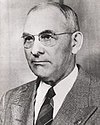
|
Democratic | 1954 |
|
Phenix City, Alabama (walking to his vehicle) | Gunshots | Unknown | Patterson was elected on a promise to crack down on organized crime in the state, which was rooted in Phenix City. | [43] |
| George Lincoln Rockwell | 
|
American Nazi | 1967 | Candidate for Governor of Virginia | Arlington, Virginia | Gunshots | John Patler | Assailant was angered by Rockwell expelling him from the American Nazi Party | [44] |
Local offices
[edit]Mayors
[edit]| Politician | Portrait | Party | Year | Office | Location | Method | Assassin | Suspected motive | Ref |
|---|---|---|---|---|---|---|---|---|---|
| Joseph Smith | 
|
Reform | 1844 (details) | Mayor of Nauvoo, Illinois; presidential candidate | Carthage, Illinois (while in jail) | Gunshots | The Carthage Greys | Targeted by an anti-Mormon mob for his growing political power | [45] |
| Carter Harrison III | 
|
Democratic | 1893 | Mayor of Chicago | Chicago, Illinois (at home) | Gunshot | Patrick Eugene Prendergast | Assailant was rejected for appointment to a patronage post as corporation counsel | [47] |
| Hale Johnson | 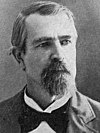
|
Prohibition | 1902 | Mayor of Newton, Illinois; presidential candidate | Bogota, Illinois | Gunshot | Harry Harris | Killed while attempting to collect a debt owed to him by Harris | [48] |
| Anton Cermak | 
|
Democratic | 1933 | Mayor of Chicago | Miami, Florida (in motorcade) | Gunshot to lung | Giuseppe Zangara | Disputed; suspected of striking Cermak instead of the intended target Franklin D. Roosevelt | [49] |
| Louis F. Edwards | Democratic | 1939 | Mayor of Long Beach, New York | Long Beach, New York (outside his home) | Gunshot | Alvin Dooley | Edwards' political influence thwarted Dooley's re-election to post in a police union. | [50] | |
| George Moscone | 
|
Democratic | 1978 (details) | Mayor of San Francisco | San Francisco, California (in his City Hall office) | Gunshots | Dan White, outgoing San Francisco City Supervisor | Assailant had recently resigned from office due to financial setbacks; he changed his mind and sought reappointment; Mayor Moscone denied this request upon the advice of Councilman Milk. | [51] |
| Russell G. Lloyd, Sr. | Republican | 1980 | Mayor of Evansville, Indiana (former) | Evansville, Indiana | Gunshot | Julia van Orden | Assailant was mentally ill and believed she was being harassed by the city; she believed Lloyd was the incumbent mayor. | [52] | |
| Mike Swoboda | 2008 (details) | Mayor of Kirkwood, Missouri | Kirkwood, Missouri (during a city council meeting) | Gunshot (died seven months later) | Charles Lee "Cookie" Thornton | Assailant retaliated for fines levied by the municipality for code violations | [54] |
City council members
[edit]| Politician | Portrait | Party | Year | Office | Location | Method | Assassin | Suspected motive | Ref |
|---|---|---|---|---|---|---|---|---|---|
| Harvey Milk | 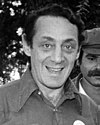
|
Democratic | 1978 (details) | City Supervisor (Councilman) of San Francisco | San Francisco, California (in his City Hall office) | Gunshots | Dan White, outgoing San Francisco City Supervisor | Assailant had recently resigned from office due to financial setbacks; he changed his mind and sought reappointment; Mayor Moscone denied this request upon the advice of Councilman Milk. | [51] |
| James E. Davis | Democratic | 2003 | New York City Councilman | New York City (at City Hall) | Gunshots | Othniel Askew | Killed by a prospective challenger for the 2003 Council special election | [55] |
District attorneys
[edit]| Politician | Portrait | Party | Year | Office | Location | Method | Assassin | Suspected motive | Ref |
|---|---|---|---|---|---|---|---|---|---|
| Mike McLelland | Republican | 2013 | District Attorney for Kaufman County, Texas | Forney, Texas (at home) | Gunshot | Eric Williams | Killed by a former justice of the peace who was convicted of burglary while in office | [56] |
See also
[edit]- List of United States Congress members killed or wounded in office
- List of United States federal judges killed in office
- List of United States presidential assassination attempts and plots
References
[edit]- ^ "American Presidential Assassinations". PBS. Retrieved May 15, 2024.
- ^ Marion & Oliver 2010, pp. 15–34.
- ^ Marion & Oliver 2010, pp. 35–52.
- ^ Marion & Oliver 2010, pp. 53–68.
- ^ Marion & Oliver 2010, pp. 113–130.
- ^ Marion & Oliver 2014, James Hinds (R-AR).
- ^ Neal, Diane; Kremm, Thomas W. (1997). The Lion of the South: General Thomas C. Hindman. Mercer University Press. ISBN 0-86554-556-1.
- ^ Marion & Oliver 2014, Thomas Haughey (R-AL).
- ^ Hart, Arthur (June 21, 2015). "Idaho history: E.D. Holbrook had a colorful and eventful life". Idaho Statesman.
- ^ Barnes, Kenneth C. (1993). "Who Killed John M. Clayton? Political Violence in Conway County, Arkansas, in the 1880s". The Arkansas Historical Quarterly. 52 (4): 371–404. doi:10.2307/40038215. ISSN 0004-1823.
- ^ Glass, Andrew (November 26, 2012). "José Francisco Chaves was shot to death, Nov. 26, 1904". POLITICO. Retrieved February 18, 2025.
- ^ Marion & Oliver 2014, John Pinckney (D-TX).
- ^ Marion & Oliver 2014, Huey Long (D-LA).
- ^ Marion & Oliver 2014, Robert Kennedy (D-NY).
- ^ Marion & Oliver 2014, Leo Ryan (D-CA).
- ^ Margolick, David (November 1, 1992). "Lowenstein Killer Moves Toward Freedom". The New York Times. p. 49. Archived from the original on January 16, 2018. Retrieved February 18, 2025.
- ^ a b c Jones, M. Jackson (2015). "In the Line of Fire: A Tribute and Discussion about the Assassinations of Judge John H. Wood Jr., Richard J Daronco, and Robert S. Vance". Creighton Law Review. 49 (1): 1–22 – via Hein Online.
- ^ Koerner, Brendan I. (April 15, 2021). "A Kidnapping Gone Very Wrong". The Atlantic. Archived from the original on April 16, 2021. Retrieved February 18, 2025.
- ^ Hsu, Spencer S.; Marimow, Ann E. (October 3, 2017). "Screams, explosions and fire in Benghazi: Bodyguard details ambassador's last moments". Washington Post. ISSN 0190-8286. Archived from the original on December 1, 2017. Retrieved February 18, 2025.
- ^ Crutchfield, James A. (2015). Revolt at Taos: The New Mexican and Indian Insurrection of 1847. Westholme Publishing, LLC. ISBN 978-1-59416-223-7.
- ^ Simmons, Thomas E. (2001). "Territorial Justice under Fire: The Trials of Peter Wintermute, 1873-1875" (PDF). South Dakota History. 31 (2). South Dakota State Historical Society: 91–112.
- ^ Klotter, James C. (1977). William Goebel: The Politics of Wrath. University Press of Kentucky. ISBN 978-0-8131-0240-5.
- ^ Stacy, Robert N. (2017). "Steunenberg, Frank (1861–1905)". In Johnson, Jeffrey A. (ed.). Reforming America: A Thematic Encyclopedia and Document Collection of the Progressive Era. Vol. 1. Bloomsbury Publishing USA. pp. 318–320. ISBN 978-1-4408-3721-0.
- ^ Brunhouse, Robert L. (1965). "David Ramsay, 1749-1815 Selections from His Writings". Transactions of the American Philosophical Society. 55 (4). doi:10.2307/1005920. ISSN 0065-9746.
- ^ Quaife, M. M. (1922). "Wisconsin's Saddest Tragedy". The Wisconsin Magazine of History. 5 (3). Wisconsin Historical Society: 264–283. ISSN 0043-6534.
- ^ Faber, Don (March 7, 2016). James Jesse Strang: The Rise and Fall of Michigan's Mormon King. University of Michigan Press. ISBN 978-0-472-12145-8.
- ^ Swanson, Drew A. (2023). A Man of Bad Reputation: The Murder of John Stephens and the Contested Landscape of North Carolina Reconstruction. University of North Carolina Press. ISBN 978-1-4696-7473-5.
- ^ "Politics Ran Wild After Civil War". Orlando Sentinel. March 21, 1999.
- ^ "Shotgun Blasted GOP From Power". Orlando Sentinel. March 5, 1995.
- ^ Mitchell, Jerry (December 30, 2023). "On this day in 1875". Mississippi Today.
- ^ "CARDIS, LOUIS | The Handbook of Texas Online| Texas State Historical Association (TSHA)". Tshaonline.org. Archived from the original on August 7, 2016. Retrieved August 18, 2016.
- ^ "Salt War turns bloody". Texas State Historical Association.
- ^ "Particulars of the Killing of Col. Tison". The Daily Memphis Avalanche. Vol. XXVI, no. 141. Memphis, Tennessee. December 16, 1882. p. 4. Retrieved June 28, 2021 – via Newspapers.com.
- ^ DeArment, Robert K. (2023). Ballots and Bullets: The Bloody County Seat Wars of Kansas. University of Oklahoma Press. ISBN 978-0-8061-9323-6.
- ^ "'70s slaying of KC politician a mob hit? - KansasCity.com". Archived from the original on November 2, 2010. Retrieved February 19, 2012.
- ^ Lentz 2002, p. 253.
- ^ "Charleston Shooting: A Timeline of Events". ABC News. June 18, 2015.
- ^ Buchanan, Tyler (April 8, 2021). "History Thursday: The vindication and downfall of Col. John P. Slough". Ohio Capital Journal. Retrieved February 21, 2025.
- ^ Roberts, Gary L. (1990). Death Comes for the Chief Justice: The Slough-Rynerson Quarrel and Political Violence in New Mexico. University Press of Colorado. ISBN 978-0-87081-212-5.
- ^ Johnson, Lewis Franklin (1916). Famous Kentucky Tragedies and Trials: A Collection of Important and Interesting Tragedies and Criminal Trials Which Have Taken Place in Kentucky. Baldwin Law Nook Company. p. 205. ISBN 978-0-7222-4946-8.
- ^ Cooke, J.W. (January 1998). "The Life and Death of Colonel Solomon P. Sharp Part 1: Uprightness and Inventions; Snares and Nets" (PDF). The Filson Club Quarterly. 72 (1).
- ^ "Oregon Secretary of State Agency History, page 11". Bluebook.state.or.us. Retrieved April 28, 2021.
- ^ "Albert L. Patterson". Encyclopedia of Alabama. Archived from the original on November 12, 2014. Retrieved December 25, 2014.
- ^ Miller, Michael E. (December 16, 2018). "The shadow of an assassinated American Nazi commander hangs over Charlottesville". The Washington Post. Archived from the original on December 17, 2018. Retrieved August 21, 2017.
- ^ "Joseph Smith: Campaign for President of the United States" (2009) by Arnold K. Garr.
- ^ "American Crucifixion: The Murder of Joseph Smith and the Fate of the Mormon Church" (2014) by Alex Beam.
- ^ Farrell, John A., Clarence Darrow: Attorney for the Damned, Doubleday, New York, 2011 p.56
- ^ "Monument To Hale Johnson". Bureau County Tribune. August 28, 1903. p. 2. Archived from the original on December 17, 2019 – via Newspapers.com.
- ^ Kendall, Peter. "The shooting of Anton Cermak". Chicago Tribune. Archived from the original on January 13, 2012. Retrieved February 3, 2011.
- ^ "15 Nov 1939, Page 1 - The Brooklyn Daily Eagle at Newspapers.com". Newspapers.com. Archived from the original on June 3, 2016. Retrieved October 22, 2015.
- ^ a b Mike Weiss, Double Play: The Hidden Passions Behind the Double Assassination of George Moscone and Harvey Milk (San Francisco: Vince Emery Productions, 2010) pp. 213-216, 474.
- ^ "View Article". Local.evpl.org. Archived from the original on March 4, 2016. Retrieved August 18, 2016.
- ^ "STLtoday - Former Kirkwood Mayor Mike Swoboda dies". Archived from the original on September 8, 2008. Retrieved September 6, 2008.
- ^ "6 dead in shooting rampage at Kirkwood City Council". St. Louis Post Dispatch. February 7, 2008. Archived from the original on February 8, 2008. Retrieved February 7, 2008.
- ^ "Killer Competition". NYMag.com. July 25, 2003. Archived from the original on November 9, 2014. Retrieved December 24, 2014.
- ^ "Prosecutors' killings rattle former cotton town in Texas - Yahoo! News". Archived from the original on April 2, 2013. Retrieved April 1, 2013.
Bibliography
[edit]- Lentz, Harris M. (2002). Assassinations and Executions: An Encyclopedia of Political Violence, 1900 Through 2000. McFarland & Company. ISBN 978-0-7864-1388-1.
- Marion, Nancy E.; Oliver, Willard M. (2010). Killing the President: Assassinations, Attempts, and Rumored Attempts on U.S. Commanders-in-Chief. Bloomsbury Publishing. ISBN 978-0-313-36475-4.
- Marion, Nancy E.; Oliver, Willard M. (2014). Killing Congress: Assassinations, Attempted Assassinations and Other Violence Against Members of Congress. Lexington Books. ISBN 9780739183601.
